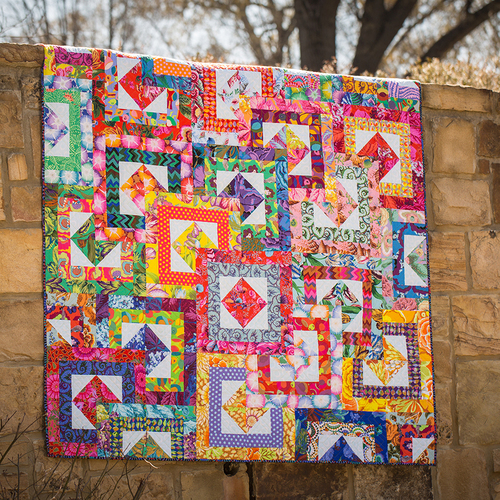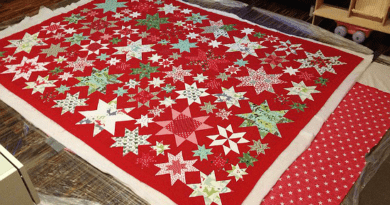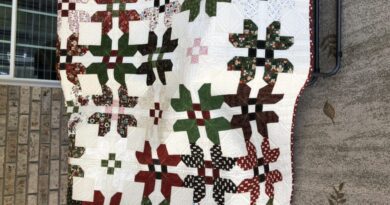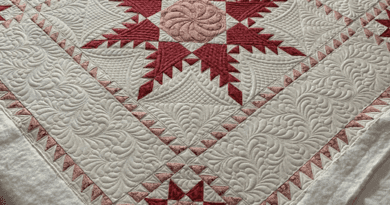All Stacked Up Quilt
Hello dear ones, this is Mommy, welcome. Ready to embark on a new adventure and discover new patterns?! SHOWCASE SPECIAL FAT QUARTERS WITH THIS EASY QUILT, IT’S A QUICK ONE TO MAKE, TOO! Choose five fat quarters to showcase in this easy quilt. Add a background and an accent fabric to pull them together. The result is a wonderful quilt that sews up quickly. It’s an easy one to make, too. Plus, you can play with color and value placements to change the look. Soft colors are lovely while stronger prints make a bigger impact.
Plus, you can choose whether or not to add a border. The finished quilt, from Amber from Gigi’s Thimble and Amanda from Jedi Craft Girl, is 62 1/2″ x 70 1/2″ with borders. THE ORIGIN OF PATCHWORK – Patchwork is a very old manual work. The first evidence of this type of work dates back to 3400 BC. In ancient Egypt, the pharaohs already used clothes made from leftover fabrics, to be used under iron armor and quilts. In the Middle Ages, patchwork spread across Europe – England, Italy, France and Germany.
They were used in banners, flags, rags and war vests.In the 18th or 19th century, it was taken to North America and different styles were created in each region. Thus began an exchange of standards and this art became a community making with social gatherings, where women gathered to work together, thus sharing problems, creations and participating in the formation of many generations. Sometimes they told, through applications and drawings, stories about their childhood; they portrayed a charm or a good memory.

And, together with the quilt – the act of passing the seam between two fabrics to form a volume – Patchwork proved to be even more special. Today, patchwork is an art applied in fashion, at home, and wherever else your imagination can reach. Currently in the United States there are museums and art galleries specializing in patchwork. Patchwork is an English word that can be translated as work made from pieces or scraps of fabric. Patch means pieces and work, work. I work with patchwork. It is a craft work, sewn by hand or machine, joining the scraps and cuts of fabrics forming designs. It’s the art of joining patches
Colors are impressions of luminous bands captured by the eyes, that is, they designate a visual sensation that occurs in the presence of light. The word “color” comes from the Latin (color) and means to cover, to hide. In other words, the colors correspond to the physical phenomena generated by light, in which the white color, responsible for originating the light, represents the union of the seven colors of the spectrum (red, orange, yellow, green, blue, indigo and violet) and , the black color, represents the absence of color or light.
Color Characteristics – All colors have three important characteristics:
- Hue: is what defines the shades of colors, for example, yellow, green and purple are hues. Thus, it is concluded that all colors are hues, whether primary, secondary or tertiary.
- Tone: corresponds to the amount of light present in the color, classified into light and dark tones. This way, when you add black to a hue, it gets a darker hue and otherwise, if we add white to a color, it gets a lighter hue, for example, when we mix red and white, we get a lighter hue, or the pink hue.
- Intensity: The intensity determines the presence of brightness in the color and can be considered weak (low) or strong (high), for example, the yellow color has a strong or high hue compared to the brown color, which is more opaque, and, therefore, of low intensity.
PATTERN FREE




